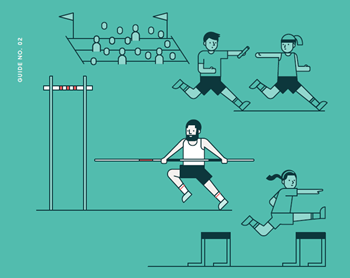The majority of consumers are migrating their digital interactions to mobile and IoT devices, and voice and chat interfaces. The number of consumers making online transactions is also rapidly increasing with the impact of the COVID-19 crisis. With this dramatic shift, the need to be digital-focused and flexible to emerging situations has become obvious. As a result, monolithic legacy systems have demonstrated some limitations in allowing businesses to effectively pivot in order to maintain momentum. The inability to accommodate necessary and quick changes to the user experience or effectively scale to meet demands could be costly.
Businesses need to transform at speed to solidify their market position. They need to become more responsive, agile, adapt to continuous changes and embrace new digital tools to improve operations and deliver a better customer experience.
What’s the solution?
Composable architectures allow organizations to build the customer experience they want through modular components that can be deployed independently. Leveraging this type of approach means that organizations can quickly create and modify an infrastructure that suits their needs, rather than fit themselves to a one-size-fits-all legacy solution.
MACH architectures (Microservices, API-first, Cloud-native, and Headless) enable businesses to create the ultimate digital experiences with the flexibility, scalability and adaptability needed for futureproof success.
Adopting MACH architectures or a more modular approach can overcome a number of obstacles faced by legacy systems, including:
- Microservices introduce faster deployment times, removing the dependence on legacy system barriers or integrations
- Cloud hosting allows organizations access to resources as they need them, scaling-up or down depending on demand, this means they can scale the system at pace, adding new sites and functionality without slowing everything in the process
- The decoupling of front- and back-end technologies allow teams to quickly respond to changing market conditions and deliver maximized CX
- A headless approach allows admins to lock down each system by limiting the amount of data available to the API, and authorizing access to any given machine to those who require it
Through MACH, businesses can have a more intuitive response with the ability to make connections between traditionally isolated business systems, like data, commerce and CRM.
Leveraging MACH technologies
The four pillars of MACH provide a futureproof ecommerce platform that can distinguish your brand by accelerating your ability to innovate and create unique customer experiences. Here’s three ways in which you can leverage MACH technologies to create a multifaceted, connected and personalized CX:
Time between action and response
The time it takes for your website to load will determine the customer experience. If your site takes 5 seconds to load, the probability of bounce increases by 90% so longer waiting times can reduce sales, cause a drop in traffic and customers to bounce. Implementing a modular architecture means that organizations can replace large monolithic systems with more streamlined, cloud-native applications that reduce latency and cache content closer to users, reducing the distance between the user and the hosting location.
More importantly, a headless approach to the customer experience enables businesses to eliminate channel siloes and deliver a continuous customer journey across multiple touchpoints.
An agile system
Embracing a composable architecture approach enables superior business agility. It allows digital teams to create and test new customer experiences in a short period of time and removes the limitations of legacy IT systems, providing the ultimate freedom to create, experiment, and meet rapidly changing customer expectations.
Using microservices gives the flexibility to choose the features that are best for the organization. This also means each microservice can be scaled independently as the business need arises.
Reliable infrastructure
A composable architecture such as MACH relies on an SaaS environment that offers multi-tenancy, meaning multiple data centers and availability zones can reduce potential revenue losses and maximize up-time.
Additional reliability comes with the benefit of a microservices architecture approach that means if one microservice goes down, the others should still be able to operate.
Reduce operational costs
While using an API-centric approach speeds up implementation and deployment, this approach also allows applications to share data with any interface in a truly integrated manner. This reduces the cost of resources in achieving maximum efficiency and accelerating speed-to-market.
Resource can also be saved thanks to the ability to seamlessly upgrade microservices independently, without the need to package new features, patches or updates to rollout in more significant releases. Due to each microservice operating independently, there’s also the additional benefit of optimizing infrastructure costs by scaling the services that are most important to the business strategy without long-term vendor lock-in.
Final thoughts
Ultimately, with a MACH approach you can stay ahead of the competition by providing a best-of-breed connected experience, by selecting the microservices most important to you, integrating them through API-centric design, scaling them through the cloud based on demand and create the ultimate omnichannel experience with a headless approach that removes silos and delivers a continuous journey across touchpoints. MACH architectures enable businesses to be able to connect with customers through as many channels as possible, provide services and deliver directly to customers without the limitations of traditional design.
To become innovative, agile, and responsive, organizations need to rethink their infrastructure to determine whether legacy systems are holding them back. In order to maintain pace in the fast-moving digital world, it’s crucial that business architecture continuously evolves to provide scalability for the fast-growing demands of consumers and the ultimate connected experience.
Access the latest business knowledge in Marketing
Get Access







Comments
Join the conversation...